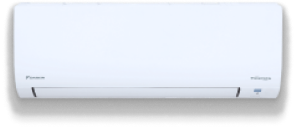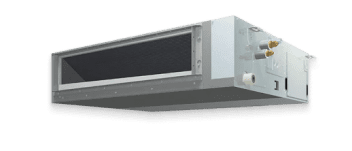
Until central airconditioning systems came through, most had to content with that old window type. Before considering a central airconditioning system though, you need to read this.
All of us may not remember it, but there was a time when owning a rattling, leaky, retrofitted window-mounted air conditioning unit would make you the envy of the entire neighbourhood.
As temperatures rose to the point that fans were undeniably just pushing hot air more forcefully into our faces, we would dream of being so blessed as to be sitting directly in front of that brutish window unit.
Now, of course, it’s impossible to ignore the primitive nature of those units — horribly inefficient, shocking expensive to run, noisy, brutally heavy, likely to create a small pond outside your window — the list goes on.
And the main reason we’ve come to terms with this is because of the advent of far better options — wall-mounted split air conditioning systems andducted central air conditioning.
And while split and multi-split (ductless) air conditioning systems provide great bang for buck, there is no denying that central (or ‘ducted’) air conditioning is the ultimate in easily controlled and building-wide cool comfort in the sweltering summer months.
But how can the average person know where to start and what to look for in a central air conditioner?
You don’t need to take a salesman’s word that you must buy the most expensive and complex system available – just read on to find out the main things you should consider before your central air conditioning installation!
Why Should I Choose Central Air Conditioning?
Is central air conditioning right for me? This is the first question any prospective buyer should ask himself or herself. There are a number of factors to consider when asking this very important question. They include:
How Large Is My Home or Commercial Space?
This is, of course, one of the most important aspects to take into consideration when choosing air conditioner types. Certain spaces are simply too large to be cooled by even multiple mini-split air conditioning units.
As a general rule of thumb, it is suggested that homes or commercial spaces over 185 square metres should strongly consider central air systems.
Does My Home/Space Already Have Ductwork?
This one often has a big impact on the decision. The space in question may already have ductwork — whether it was pre-installed in the house, it exists for a heating system, or you are considering replacing an older central air system.
Whatever the case may be, the result is that it is extremely cost effective to install a central system in this instance. Many existing furnace fans can actually be utilised as part of the air conditioning system!
Do I Want a More Discreet or Invisible Cooling System?
There is no question that ductless split systems are far less bulky and not as unattractive as old window units.
And as time goes by, they continue to get smaller and more stylish. However, they are still clearly visible due to the nature of their operation.
For many homeowners, after going to great lengths to perfect their interior décor, it is not acceptable to have a sizable plastic appliance disrupt the design of rooms and draw unwanted attention. In this instance, a central air system is the one to choose.
Is Central Control Important to Me?
Homeowners may sometimes decide to install multiple split air conditioning systems rather than central air conditioning — especially if only certain rooms need to be cooled.
This also allows for separate temperatures in separate rooms without specialised ductwork. However, only central air with a zoning feature can offer the ultimate convenience of setting different temperatures without walking about the house. It also tends to be more accurate as it is one system working in unison.
Do Rooms with Internal Walls Need Cooling?
This is one that is often neglected. Perhaps your living room, which gets quite hot, is in the middle of the house and has no outside walls. Or maybe the room has floor-to-ceiling windows throughout.
This will generally require running extra piping through the roof, and drainage can often be a challenge. Due to the extra trouble and cost, it may often turn out to be no less expensive than installing a much sleeker central air system.
Will I Need Heating As Well?
Many newer ductless systems can act as a ‘heat pump’ — put simply, the system reverses direction and brings warm air in. These are effective to temperatures as low as about -7° C, which means that, depending on the size of your home, you can greatly reduce the use of your furnace for heating purposes!
I’ve Chosen A Central Air System. What Are My Next Steps?
First of all, you should always have your central air system installed by experienced air conditioner installers.
Proper air conditioning installation should take a number of factors into consideration, and to accurately assess these, you will need the experience and technical know-how one of these professionals offers.
Your air conditioning expert can help you with things such as:
Heat load calculation
This primary consideration is a calculation of how much hot air will need to be cooled in a particular space.
Inexperienced installers may simply say “you will need this unit because your house is ‘X’ square metres large.’ However, the heat load calculation depends not only on size of the home or commercial space. One should also consider the quality of insulation, building materials, the number of people usually in the home, geographic factors and more.
Miscalculations can have serious consequences – if your system is under capacity, you will be unable to efficiently cool your home and have high running costs attempting to do so.
An over-capacity unit has drawbacks as well – in addition to overspending on the system, the unit will not de-humidify the space, and it will become damp and quite uncomfortable.
Efficiency
In Australia, all air conditioning systems must meet certain Minimum Energy Performance Standards (MEPS) depending on type.
After ensuring this standard is met, discuss with your air conditioning system provider and installer which of an appropriate model in your price range has the highest efficiency, as this is not just good for the environment but will save you money in the long run.
Features
You will also want to discuss the features you desire in a central air conditioning system. Some possible examples would include:
- Scheduling: Setting different temperatures and actions by time and even by date.
- Multi-Speed Blower: Your blower can work at a number of different speeds, saving energy costs when a faster speed is unnecessary.
- Variable Speed Blower: This is an even more advanced air handler that can work throughout a range of speeds, going down to a barely perceptible rate when cooling is not needed. This continuous circulation means consistently better air quality – and the special motors used here consume as much as 80% lesselectricity than a standard single-speed motor.
- Zoning Control: This allows different temperatures in different areas, or a steady temperature throughout the house even when one area has a far higher heat load than others.
- Automatic Delay Switch: This is handy for those times when less rapid cooling is necessary and you would prefer to save on energy costs. After the compressor has cooled the air sufficiently, it will shut off and the fan will do the rest of the work cooling the remaining air.
- Ductwork—Your next step is to discuss your ductwork with your installer. If you have existing ductwork, it may need minor modifications to work most efficiently with the new system. This is undoubtedly something you want to figure out before installation. Incorrect or inefficient ductwork can result in poor performance of an excellent system; in the worst cases, it may even require a complete overhaul. If no ductwork exists, your installers can give you an idea of the type of work needed and the estimated costs. These days, the modifications necessary and the work necessary is far less intrusive that one might assume.
- Condenser placement—Though, as with all newer technology, consdensers are quieter than ever before, a motor and fan will always make some noise. You will want to avoid places where it may be a nuisance (near windows, outside bedrooms etc). You will also want to ensure there are no obstructions to the condenser’s ability to expel exhaust air.
Conclusion
A central air conditioning system is undoubtedly one of the best comfort-related investments you will make for your home, office or other commercial space.
However, every installation is different — and most importantly, the system installed should be the best cooling option for your needs, whether it’s a central or multi-split system.
With extremely qualified staff, exceptional customer service, the highest quality systems and 24/7 availability of management staff, Climacool Air Conditioning is Sydney’s number-one choice for air condition and ventilation. Contact us today and let us help you maximise the comfort of your home or commercial space!






_001.png)


.png)
